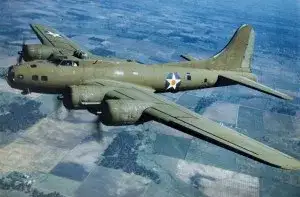Not a movie I want to see
June 26, 2023 by Thomas Wictor
My favorite art form is film. Nothing entertains me like a great movie. I’m not even picky about what I like. What I can’t stand is ham-handedness. That’s why the upcoming Brad Pitt extravaganza Fury is not a movie I want to see. Here’s the trailer.
The film is about a worthy subject: In World War II, the Americans decided to concentrate on building overwhelming numbers of tanks instead of creating fewer, less vulnerable fighting vehicles. The tank in Fury is the M4 Sherman, which was completely outclassed by most of its German counterparts.
In order to provide the maximum number of tanks possible, the Americans made the Sherman lighter and smaller, which meant that less steel had to be used and individual vehicles could be built faster. The tradeoff was that the much-thinner armor of the Sherman made it relatively easy to destroy in a tank-to-tank battle.
Between 1941 and 1945, the US produced over 49,000 Shermans. The trailer for Fury shows Shermans engaging a German Panzerkampfwagen VI Ausf E, the famous Tiger tank. This was a massive, heavily armored vehicle with a huge cannon on it.
In the entire war, the Germans were able to build only 1347 of them. Though the Tiger could slaughter the Sherman one on one, the Allies devised a horrifically practical solution for defeating the German tank’s superiority.
My only quibble with that clip is that I don’t agree that commanders “callously” decided that they could sacrifice four Shermans for every Tiger they got. There was simply no other answer. After World War I, the Americans had almost totally disarmed. The US had no real experience with tanks, while the Germans had completely rewritten their infantry doctrine in 1926, basing the new tactics around the tank. From 1933 they were able to put their theories into practice. They were almost twenty years ahead of the Americans in terms of training and experience.
The Americans not only had to embark on a crash program to build the vehicles themselves, they also had to figure out how to use them. This took time, and many mistakes were made. Soon after the US entered the war on December 7, 1941, a heavy-tank program was begun. The M26 Pershing was the finished product, which saw less than two months of combat before the Germans surrendered on May 7, 1945.
Back to Brad Pitt’s Fury.
I don’t need stirring music to make me understand that I’m supposed to feel emotion. Also, I’m sick to death of the stilted, self-conscious way American actors perform in war movies.
“It will end. Soon. But before it does, a lot more people gotta die.”
Was it Talk Like a Pirate Day when you filmed that scene, Brad? Aarrr!
And can you tell me what the hell Shia LaBeouf says at 1:39?
“Where langadoodle love a man.”
My problem with American war movies is that the people who make them get all bloated with righteousness. This is the message. Always. Every time.
Really? HOLY SHIT! Thank you so much for telling me, because I had no idea! I thought war was just a sort of harmless pastime, and then you came along, Mr. David Ayer. God bless you for enlightening me. But I have a question: If this message of yours is so important, why does Brad Pitt sound like he’s bored out of his mind?
“If you think it can’t get worse, it can. And it will. The dying’s not done. The killing’s not done. I promised my crew a long time ago I’d keep them alive. Three years ago I locked my keys in my car. Had to call Triple A. The guy who came in the tow truck was about forty years old, with dark hair parted on the left side, I think, and he was about five feet, six inches tall. Didn’t say much as he worked. Neither did I. Took him about two minutes. That’s just an estimate. I didn’t look at my watch. After he opened the door, I got my keys. Then I went shopping.”
The Europeans make much better war movies than we do. They’ve absorbed the “War is hell!” truism and don’t belabor it. Their war movies are about people; our war movies are this.
If I wrote a screenplay for a war movie, it wouldn’t hammer everyone over the head with how bad war is. The conceit of American filmmakers and actors is they think they can stop war with movies. The only way to stop war is to make the costs outweigh the benefits. We’re getting there. Almost all wars today are civil wars. Transnational wars have been nearly eliminated. We’ll never fully eradicate war, any more than we’ll eradicate murder.
But my war screenplay would be about the World War II American air mechanics who had to be abandoned in the Philippines when the Japanese were on their way. There was simply no way to save the men because we didn’t have enough transport aircraft.
After everybody left, the mechanics got to talking. There were five damaged Boeing B-17 bombers on the base, none in flying condition.
What the mechanics did was cobble together one working bomber, and then they discussed what they knew about flying. Each mechanic had been told a different thing by their pilots, so as a group, the men theoretically knew how to fly.
And that’s what they did. They boarded the bomber, started it up, and each man contributed what he’d heard about taxiing, getting off the ground, and navigating. These ten non-pilots flew to Australia, and when it was time to land, every man again shared his tidbit of information. They landed safely, the only time in the history of the planet that people who didn’t know how to fly actually built an aircraft and piloted it home.
Isn’t that a great story? How come nobody’s made a movie out of it yet?
Idiots.
This article viewed 285 times.



